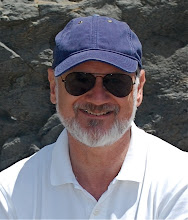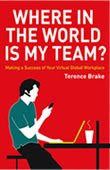 Serendipity can be a wonderful traveling companion, and on a recent journey she took me to meet Patsy Rodenburg (figuratively, of course).
Serendipity can be a wonderful traveling companion, and on a recent journey she took me to meet Patsy Rodenburg (figuratively, of course). Patsy is one of the most highly regarded voice coaches in the world, and has worked with actors like Judi Dench, Ian McKellen, and Daniel Day-Lewis. She is also an author of such books as Speaking Shakespeare, The Actor Speaks, and The Second Circle. One of the reasons I was drawn to her was that her ideas are not just relevant to the acting world, but to all us – in our relationships, our work collaborations, in our classrooms.
The central concept is presence (attentive energy), and we are always faced with the question, “To be present or not to be present?” We have a choice. She says: “I actively discouraged behavior that in my observations, diminished energy: carelessness, slouching, shallow breathing, underpowered voice, uninformed thinking, mocking and cynicism – anything that seemed to drain the vital life force out of a human being and the group around that person.”
She eventually identified three circles of energy – ways human energy moves:
First Circle: This is energy moving inward (withdrawal) drawing energy to the self. If you are with someone who is in the First Circle, you feel alone, ignored, dismissed, unimportant; that person is just not with you in the moment. They are detached. When you are in the First Circle, you are not observant or perceptive of what is outside of yourself. At its best the First Circle energy is engaged in introspection and reflection, but often it is just sucks passion out of us, and others.
Third Circle: This is the opposite of the First Circle. This is energy forced outward. It is the energy of bluff and force, the energy of attracting attention. This energy lacks intimacy; it feels impersonal – “. . . others feel they don’t really matter to you.” Listening is not going on; those in the Third Circle look through people rather than at them. They stay on the surface in their interactions with others. Those in the Third Circle want to be felt and seen, not reduced and ignored.
Second Circle: People in this circle fully connect with the world; they are present, alert, and available to others. The energy is focused. “Two human beings present together experience intimacy and knowledge of one another.” It is the circle of giving and taking of energy - “you touch and influence another person rather than impress or impose your will on them.” You hear and are heard; you notice details about others, and you acknowledge the feelings of others. The Second Circle “is a state of mind and body where confident, relaxed control allows us to establish intimacy and human connection where and when we want it.”
All of us can move between these circles, but we tend to have a habitual one.
Collaborations will be more productive – and provide a better experience for all involved – if Second Circle interactions are encouraged and role-modeled.
Here is a link to a video of Patsy Rodenburg talking about the Second Circle http://www.youtube.com/watch?v=Ub27yeXKUTY, and I highly recommend her book The Second Circle: How to use positive energy for success in every situation if you want more detail and practical exercises.






